Humulus lupulus - common hop
 Common Hop (Humulus lupulus) of the Cannabaceae family is most often associated with beer as its fruit (commonly known as "cone") is an indispensable ingredient for the production of this popular drink.
Common Hop (Humulus lupulus) of the Cannabaceae family is most often associated with beer as its fruit (commonly known as "cone") is an indispensable ingredient for the production of this popular drink.
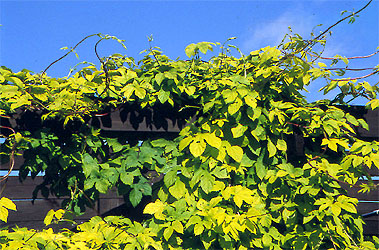 Common Hop 'Aureus' on the pergola - photo Sz. Marczynski Common Hop 'Aureus' on the pergola - photo Sz. Marczynski |
However, it's less known as a valuable, luxuriant climbing plant. It is native to Europe, including Poland. Its yellow-leafed variety 'Aureus' is particularly valuable.
'Aureus' is a vigorous perennial with rough-textured, twining stems. They grow 6 m high in a year, and the plant can grow 2-3 m wide, creating in just a few weeks a golden wall of leaves and stems. The upper stems die back in autumn, but in spring new shoots appear from the underground part of the plant. The leaves are large, rough, deeply-lobed (as those of grapevine), serrated and remain golden yellow through the whole growing season. Common hop is a dioecious plant, and since 'Aureus' is a female clone, it produces yellow cone-like flowers in autumn.
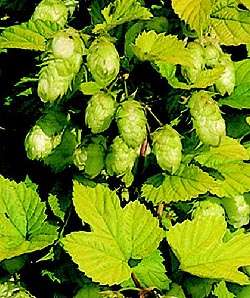 Humulus lupulus 'Aureus' - fruit Humulus lupulus 'Aureus' - fruit photo Sz. Marczynski |
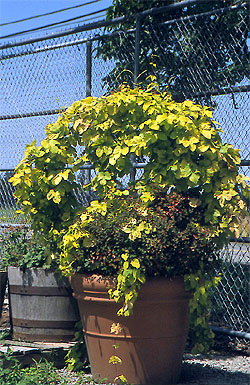 Common Hop 'Aureus' in the pot Common Hop 'Aureus' in the potphoto Sz. Marczynski |
Requirements.
Common hop grows best and produces the best leaf colour in full sun.
It doesn't have any special soil requirements on condition that the soil has good water-retention capacity and is slightly moist or moist. It grows more abundantly in fertile soil. Common hop is frost hardy and can be successfully grown in the zones 5-8. Downy mildew causing brown, drying spots on the leaf surface is the most dangerous of all hop diseases. It affects especially the plants growing in shade or the ones that have their leaves often wetted. In a dry position it's susceptible to the attack of spiders and aphids.
Application.
Humulus lupulus makes a good screening plant. It's perfect for both large and medium gardens, especially of a naturalistic design or for colourful combinations. The stems won't cling to a smooth surface (e.g. a wall), but its self twining habit means it will climb up all kinds of supports such as wires, stakes, poles etc. Owing to its vigorous growth, in just a few weeks hop can easily cover fences, trees, arbours, arches, pergolas and other supports or small buildings. However, it's quite expansive and produces underground stolons, and therefore it shouldn't be planted in a small garden or next to valuable plants.
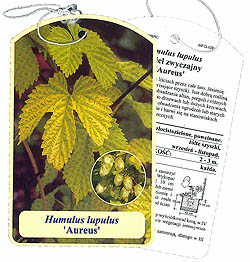 An exemplary label with a photo and growing instructions |
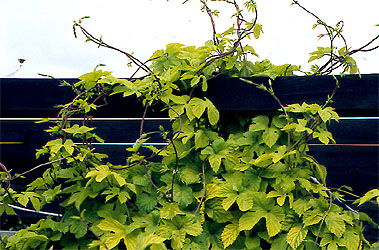 Common Hop 'Aureus' on the fence - photo Sz. Marczynski |
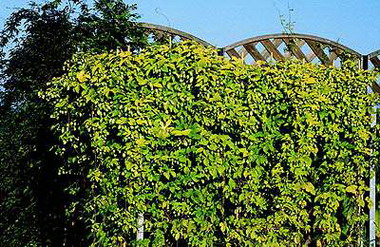 Common Hop 'Aureus' on the fence photo Sz. Marczynski |
Attention!
On the market you can often encounter a yellow-leafed hop propagated from seed, whose leaves are more of a light green than of a bright yellow. That's why it's better to buy it from a reliable source that sells vegetatively propagated plants supplied with a colorful label and a detailed instruction for growing.
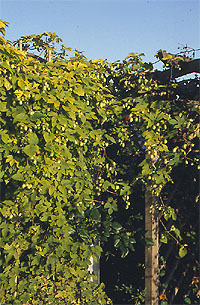 Common Hop 'Aureus' on the wall photo Sz. Marczynski |
